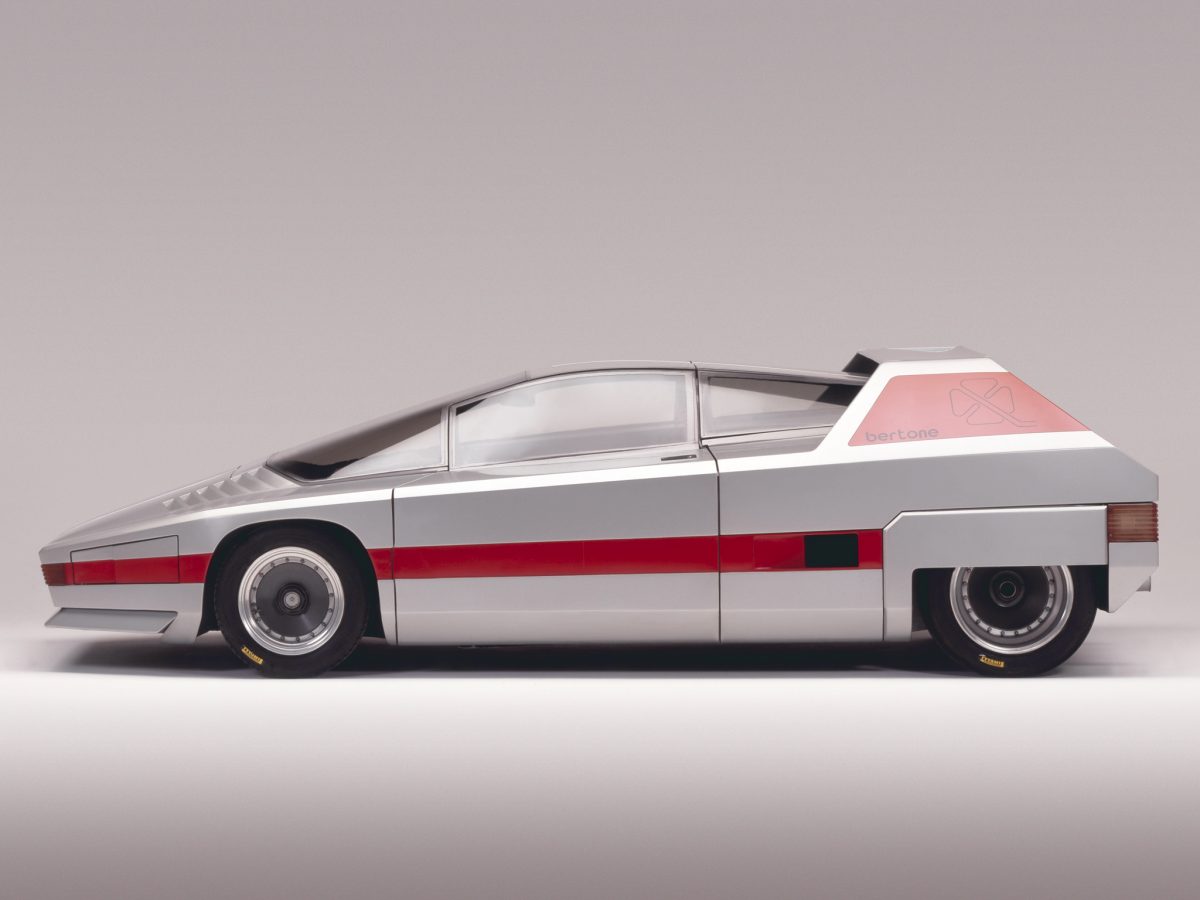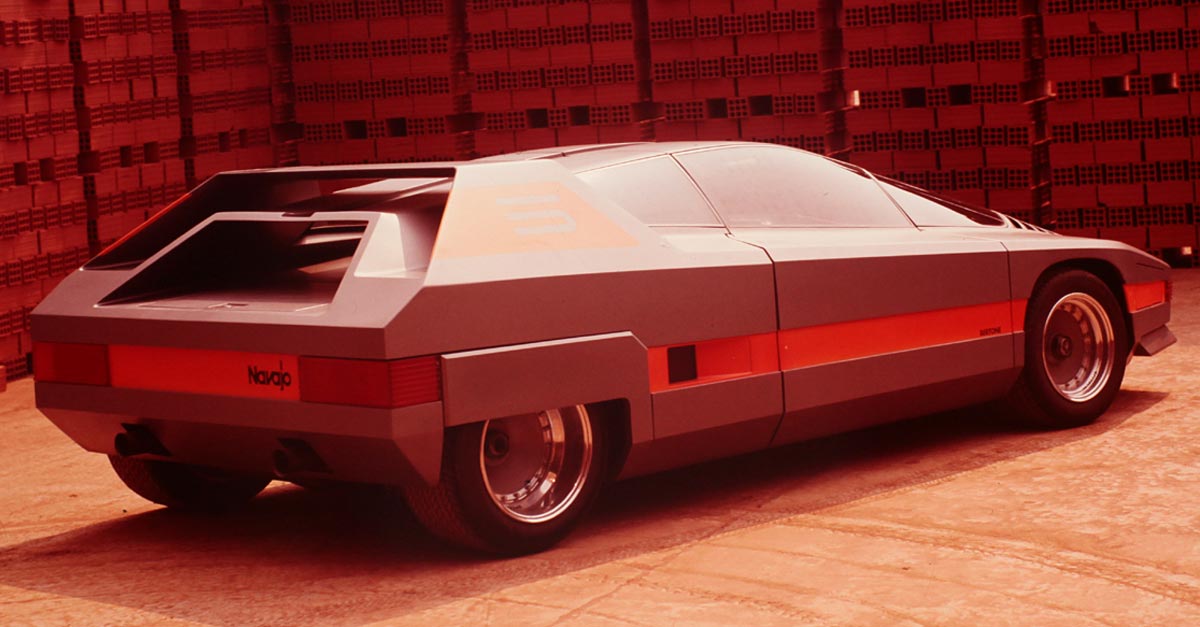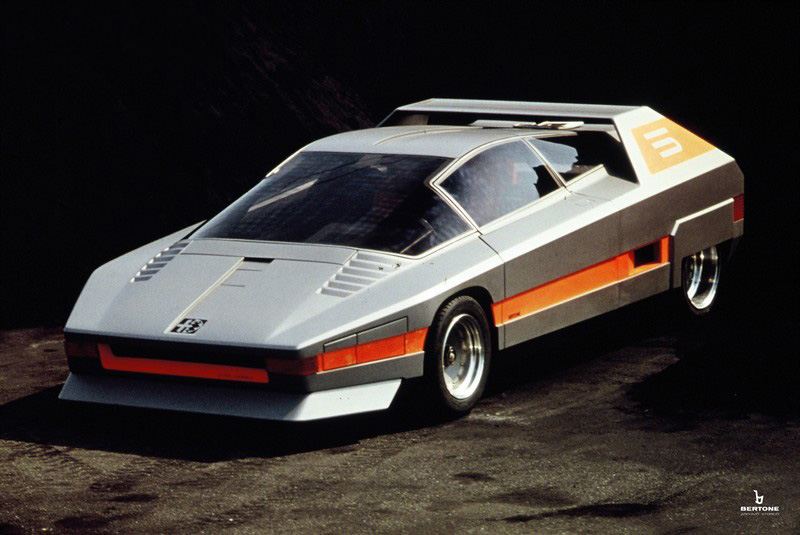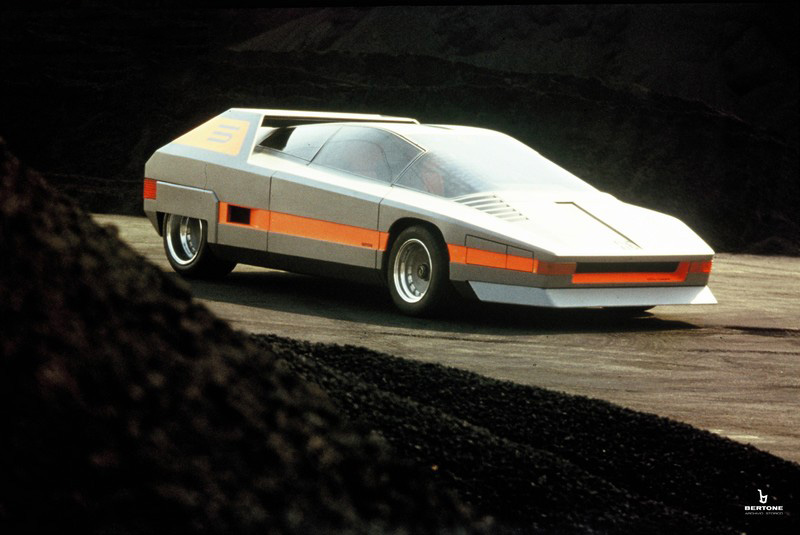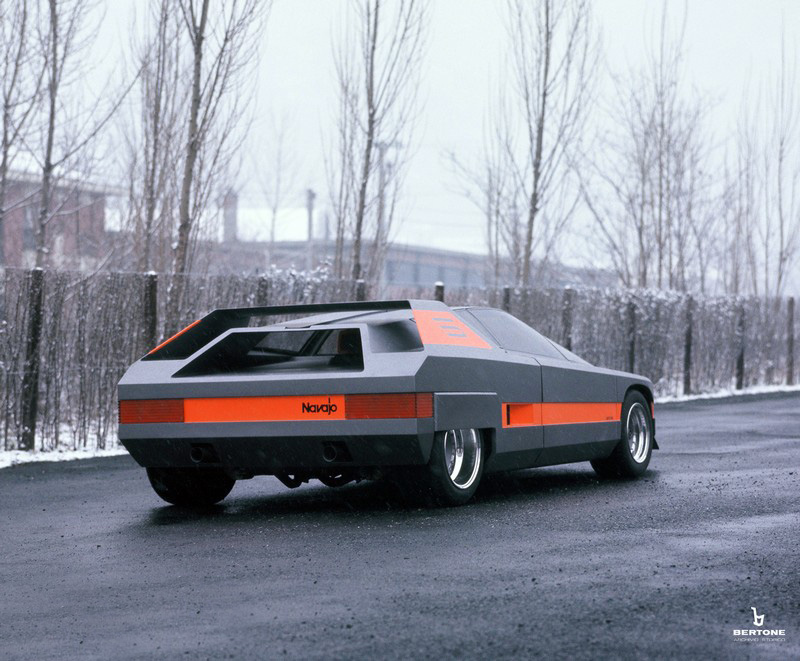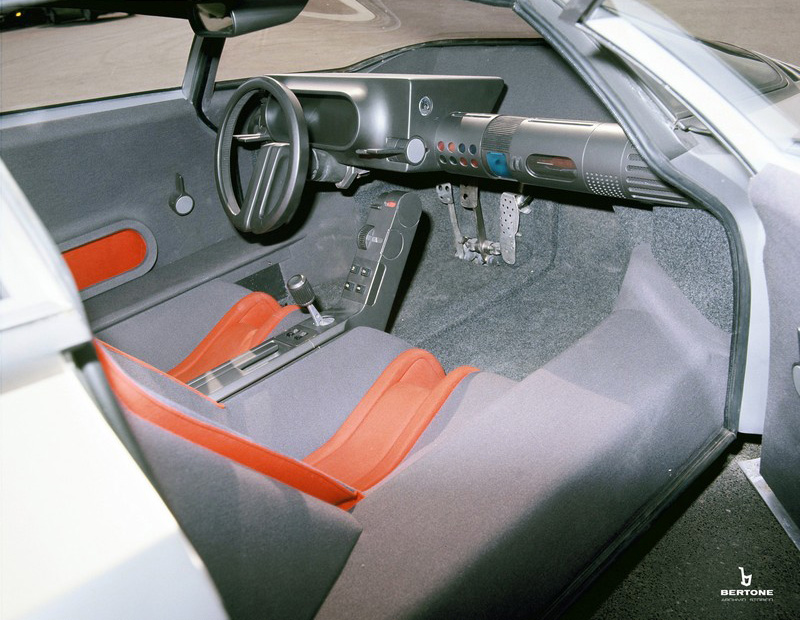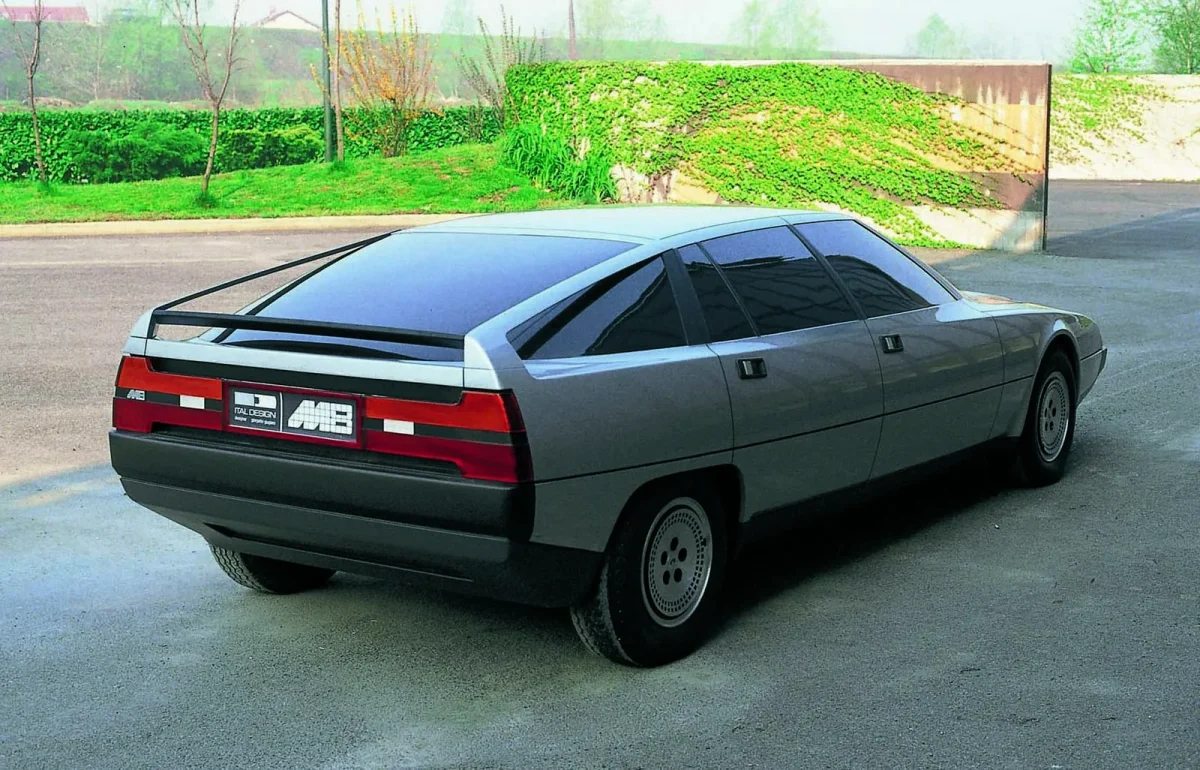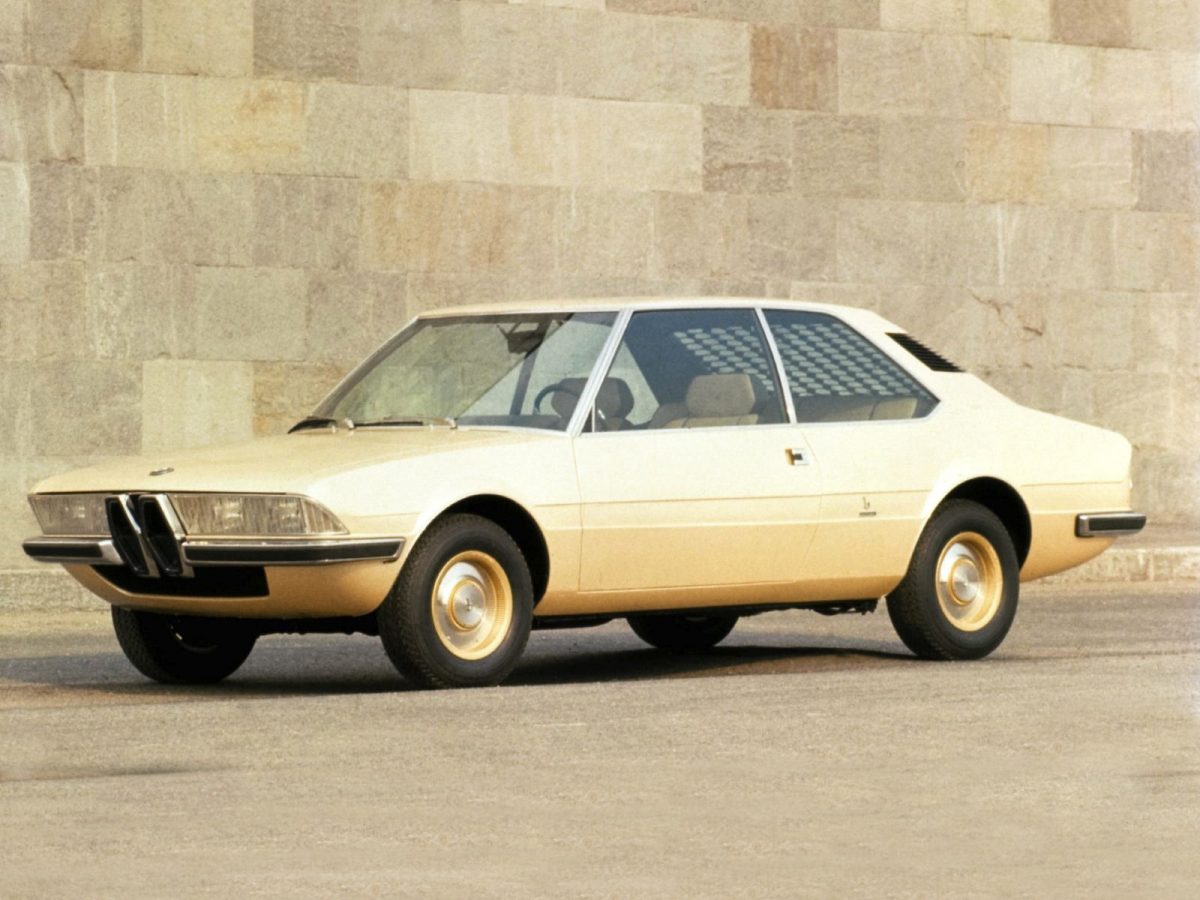
Alfa Romeo Navajo (Bertone) (1976)
The Navajo symbolised the new accord between the Turin bodywork designer and Alfa Romeo, a partnership which over the years had turned out many world famous cars. Names like the Giulietta Sprint, Canguro, Giulia GT, Carabo and Montreal evoke fundamental steps in the evolution of the sports car.
Despite its intentional design excesses, the Navajo represents a concrete idea for a sporty coupé based on the prestigious mechanics of the Alfa 33. The original tubular chassis was lengthened and adapted to create optimum room for two passengers. The bodywork, entirely in fibreglass, together with the chassis, gives an excellent result in terms of weight. Given the availability of generously powerful engines, the Bertone designers focussed their attention on the aerodynamic questions related to road holding, as well as thinking of pure speed. The Navajo benefits from this approach both in general design terms, and as far as accessories are concerned. The frontal view is extremely tapered, reducing air resistance to a minimum, and to this end, the car also features a brand new and very original front spoiler, which automatically regulates the angle with the ground according to the speed of the vehicle. The rear wings, aside from providing an interesting aesthetic motif, represent a valid support for the generous rear spoiler, which is also adjustable. The disappearing headlamps open horizontally to the plane of the car.
Presented at the Geneva Motor Show in March 1976, the Navajo captured the attention of public and experts alike: the avant-garde solutions on show were yet another demonstration of the designer’s unique style, constantly experimenting and ahead of its time.
Source: www.bertone.it

